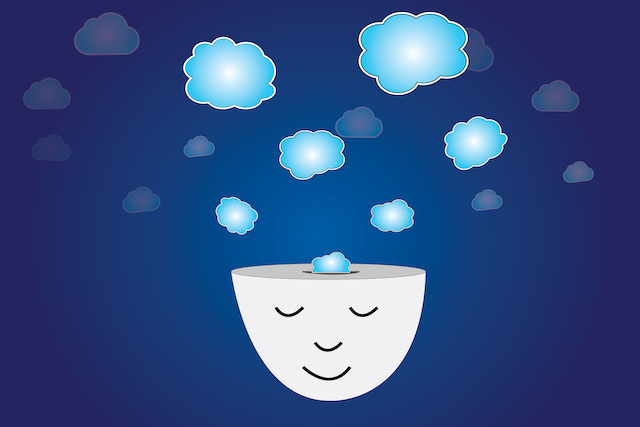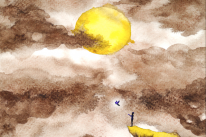
“Absorb what is useful, discard what is useless and add what is specifically your own.” ~Bruce Lee
The benefits of meditation are far reaching and have been well known for centuries. However, the idea of formal meditation doesn’t sit well with some of us.
The idea of sitting cross-legged for extended periods and delving inward puts many of us off before we’ve even got started. Even the word “meditation” can be a very real barrier to entry for some. What a shame, as the many benefits of meditation can be good for us all.
Those benefits can include:
- A reduction in the stress we feel
- A deeper sense of calm and relaxation in our lives
- Reduced feelings of anxiety
- A better understanding of what we truly think/feel/want
- Less feelings of anger, hurt, or disquiet
- Being more present
- Being more content
- A better understanding of who we really are
This little list is just starting to scratch the surface. Meditating can be that powerful.
If meditating in a more traditional way for extended periods feels right for you, all power to you— please continue with your journey. If that isn’t you, don’t worry, I’m here to tell you it doesn’t have to be.
If you recoil a little when meditation is mentioned but still want to reap some of the rewards, I hope to offer several ideas that might work for you. But first, a bit of personal reflection.
I Confess I Do Not Have a Formal Meditation Practice
As someone that writes books and a blog all under the broad umbrella of simplicity and that can often be found leafing through books and words by Thich Nhat Hanh, Bruce Lee, Sun Tzu, and Lao Tzu, it may surprise you to know I do not consider myself to have a formal meditation practice.
Perhaps somewhat out of step with the trend of our time, my morning routine (if I even have one) does not have time carved out for sitting cross-legged in a quiet room, reflecting on the universe at large.
Don’t get me wrong, I admire that others do this, but it never really felt like a fit for me. I’ve tried to make it a habit, at a few points in my life, but it just hasn’t stuck.
If I’m honest, I think the word “meditation” itself intimidates many of us. We perceive it to mean we need some special point of entry, or skillset, to reap the rewards.
All this said, perhaps paradoxically, I am also totally sold on the benefits of meditation and I want them to be a part of my life. I just happen to believe you can get those benefits in other ways. Your formal practice doesn’t have to be formal, and you don’t even have to call it a “practice.”
This is where the art of meditating without meditation comes in.
Meditation without Meditating in Action: My Top 6
Here are some of my favorite ways to achieve some of meditation’s powerful benefits without actually feeling like I am meditating.
1. Walking
Walking is my ultimate reset. It blows away the mental cobwebs that can accumulate. It provides new stimulus and re-energises a tired mind. Complex problems I’ve been struggling with can suddenly feel like they fall into place on a good, long walk. A fresh perspective can somewhat magically drift into view.
I like to walk early, before the rush and before the noise of human traffic drowns out the birds singing. Depending on where I am, I like to walk as close to nature as possible (a nice park, a beach, a hike over rolling hills). This is as close as I consider I get to a formal meditative practice.
2. Being at one with the outdoors and nature
The natural world is a passion for me. Something that breathes life and color into any day, if I just make time to stop and notice what is going on around me. I find it grounding and uplifting all at once.
Nature presents us with a constant wonderland. It’s easy to take this for granted. We can fix this by spending some time just being at one with nature and reconnecting with the great outdoors, and we’ll feel so much better for it.
Be amazed by that spider’s web glistening with the morning’s dew.
Take in the sun rising and setting.
Make time to watch the clouds moving overhead, soak up the inspiration that comes from the view.
Be endlessly in awe at nature’s ability to evolve, adapt, and deal with challenges.
Enjoy the offerings of new life and renewal each and every spring, by making deliberate time to stop and notice.
3. Losing myself in music (art)
Some would say this is cheating, as you are using outside stimulus to get a response; I say call it what you will. The benefits that people claim to get from meditation, I have and feel from losing myself in music.
Music is transformative. It can lift our mood on our darkest days, it can ease anxiety when we feel on edge about something, it can shift our mindset.
We can leverage different music at different times to support our state of well-being. Music is one of life’s true pleasures for me, one of the very last things I would want to give up.
However, if music isn’t quite as powerful a force in your own life, perhaps there is something else that is. Literature can, and does, serve the same end. Or a beautiful painting or sculpture that really moves us, or even a really great movie. All of the above can be transformative, life-affirming, and even life-changing ways we can apply ourselves.
4. Seeking stillness
Seeking stillness may sound like a total contrast to the earlier suggestion to listen to music; maybe it is or isn’t, but this time is necessary for me. This is time to let my mind just drift without expecting too much of anything from it. Letting it wander where it wanders. In a results-orientated culture, we can spend too little time here.
Cut to the core, this is actually what meditation is all about. For me, all it really means is taking the time to get in touch with our own thoughts and finding a point of reflection. It’s cutting out the external world for a while and tuning into frequency us. It’s about reconnecting with the signal, amongst the noise.
This is time to turn off the phone, unplug from the internet, and make space for some calm in our day.
Disconnecting a little from the busy world around us, to reconnect with ourselves.
No special cushion necessary, unless you want one, no special seating position necessary unless it helps trigger the state. Just make a commitment to be mindful and find some stillness in your own way.
5. Creating
For me this means writing and playing guitar.
Writing, in particular, is something I spend much time on. I feel better on days and weeks that I have made time to write creatively. Ideas flow freely and come out on the page. I make sense of thoughts and words and try to communicate as effectively as I can, then I refine (edit). When I am truly in a writing flow, this creative process can definitely feel meditative.
6. Exercise (calisthenics, yoga, and breathwork)
I am a fan and practitioner of calisthenics (working with one’s bodyweight as the weight). I find this form of training both physically demanding and endlessly interesting. I enjoy the raw simplicity.
Learning new moves or practicing well-worn moves, trying to perfect them, also has a meditative effect. I’m totally in the practice, and often have to be if the move in question is getting hard or has a balancing element. Trying to create whole body tension for some moves also means I need to be aware of where my breath is (am I holding it somewhere or letting it flow?).
Yoga is relatively new to me and I have been slow to embrace it, perhaps somewhat surprisingly as my wife is a yoga practitioner and teacher and has encouraged me to give it a proper go for years. Knucklehead that I am, I finally took note and I’ve come to really enjoy this time. I now make time for working on the mat through my week, amongst other exercise I do.
As I am new to the yoga poses themselves, and how different teachers teach, I find I have to be totally present for yoga. No time to think about what comes after or what has just happened; to keep up with the class I have to listen. This has a calming effect on body and soul on the best days.
The breathwork, and constant queues to focus on breath, have also made me aware of where I tend to keep tension (physically and mentally).
Reframing Meditation
What’s great about this list is that you can use these practices interchangeably, and they can happily co-exist at the same time.
I think the “meditation” label puts as many off as it attracts. In busy and distracted times, this is a missed opportunity for us all to feel the benefits.
When we forget the labels, all we’re doing with the practices above is resetting a little. The art of meditating without meditating if you like.
Give it a go. String these resets together on a regular basis and feel the benefits for yourself. Who knows, maybe you’ll even be open to further experiments in formal meditative practice after doing so. If not, just find your own way. Keep what works for you, discard what doesn’t, and call it what you want, or call it nothing at all.
About Carl Phillips
Carl writes short books full of big ideas. He is also the proud owner of Frictionless Living which is focused on helping readers find and live their own version of a simpler, good, life.













 Though I run this site, it is not mine. It's ours. It's not about me. It's about us. Your stories and your wisdom are just as meaningful as mine.
Though I run this site, it is not mine. It's ours. It's not about me. It's about us. Your stories and your wisdom are just as meaningful as mine. 